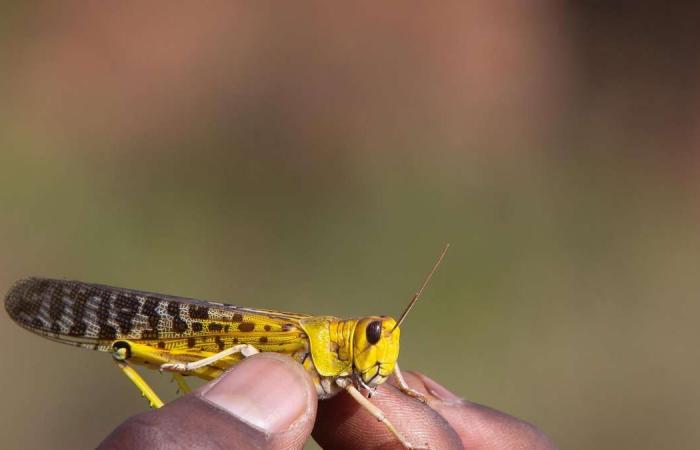Thank you for your reading and interest in the news Millions of locusts invade farms in Saudi Arabia and Yemen and now with details
Hind Al Soulia - Riyadh - Large swarms of locusts have been seen on farms and in rural areas in Saudi Arabia and Yemen over the last few days, after countries in the Horn of Africa witnessed the largest outbreak of the insects in decades.
Kuwait's Al Rai newspaper reported on Monday that the swarms of locusts invaded the agricultural areas in four Saudi regions: Riyadh, Qassim, Hail and in its Eastern Province.
Desert locusts pose a significant threat to food security and livelihoods, by feeding on plants and crops on farms.
The newspaper said that Kuwait is under threat too, from locusts coming from Iran, at the country’s southern borders. In response, the country’s General Authority for Agriculture and Fisheries is taking measures to protect the farmland that contributes to the largest share the of the country's plant wealth and food security.
An unnamed official told the daily that Kuwaiti officials have been engaging with Saudi Arabia to co-ordinate a response to the movement of the locusts. The source said that wind movement heavily influences where the locusts end up and that “all necessary measures” had been taken to prevent a large scale locust swarm in Kuwait.
Executive Secretary of the Desert Locust Control Authority in the central region of the Food and Agriculture Organisation, Mamoun Al Alawi, said that billions of locusts have recently arrived in Yemen and the eastern coast of Iran and Pakistan.
The news comes as swarms of billions of locusts have been destroying crops in Kenya, which hasn’t had such an outbreak in 70 years, as well as Ethiopia, Somalia and Uganda, which last have comparable swarms a quarter of a century ago.
Last week, Uganda scrambled to respond to the locust outbreak while the UN warned that “we simply cannot afford another major shock” to an already vulnerable region.
After an emergency government meeting in Uganda on February 10, military forces were sent to help with ground-based pesticide spraying, while two planes for aerial spraying will arrive as soon as possible, a statement said. Aerial spraying is considered the only effective form of control.
The insects have exploited favourable wet conditions after unusually heavy rains, and experts say climate change is expected to bring more of the same.
Some of the swarms have been huge. One in Kenya measured 40 kilometres by 60km. Up to 150 million locusts can gather in a square kilometre, but even a small swarm can devour enough food for an estimated 35,000 people daily.
The Desert Locust begin its breeding cycle in eastern Sudan, Eritrea and Ethiopia during the rainy season in July and August. The species later migrates to the Red Sea coast and the Middle East.
Updated: February 17, 2020 04:39 AM
These were the details of the news Millions of locusts invade farms in Saudi Arabia and Yemen for this day. We hope that we have succeeded by giving you the full details and information. To follow all our news, you can subscribe to the alerts system or to one of our different systems to provide you with all that is new.
It is also worth noting that the original news has been published and is available at The National and the editorial team at AlKhaleej Today has confirmed it and it has been modified, and it may have been completely transferred or quoted from it and you can read and follow this news from its main source.

